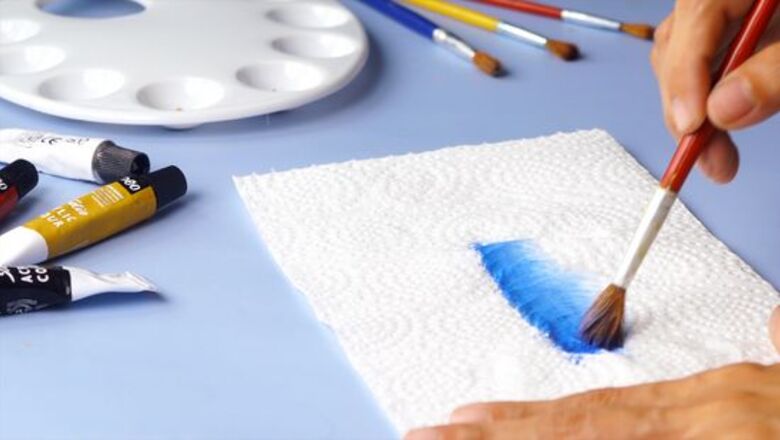
views
X
Expert Source
Patrick CoyePainting Specialist
Expert Interview. 22 July 2020.
Luckily, cleaning acrylic brushes only takes a few minutes of work. Cleaning your brushes allows you to use them over and over and will help lengthen the lifespan of your paintbrushes.
Removing Excess Paint From the Brush
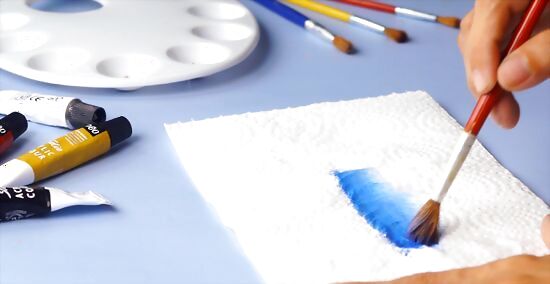
Glide the paintbrush over the paper towel or rag to get rid of excess paint. Brush the bristles of the paintbrush over the paper towel or rag until the brush stops making marks. Doing this helps to remove paint before washing the brushes.
Swish the brush in a cup of water. Lower your brush into a cup of water and swirl the bristles of the brush around the bottom for a few seconds. Don't submerge the brush for a long period of time; just swish the brush around to dislodge any more excess paint. If you used a cup of water to rinse brushes between colors, you can use this water or clean water. You will wash your brush with soap and water after this initial wash so it's ok if the water is cloudy. After you have wiped away the paint and submerged the brush, your brush will be cleaner. However, doing this much isn't enough to completely clean the brush. You need to use soap and water to clean the brush and keep the bristles soft and flexible.
Cleaning With Soap and Water
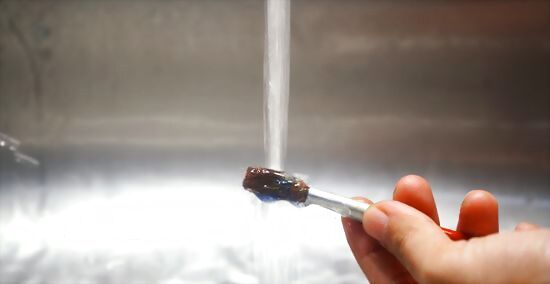
Hold the brush under lukewarm water. Turn on the hot and cold faucets until the water is lukewarm. Then hold your brush under the stream of water for five to ten seconds to rinse it, and scrub gently, rotating it around so that the water hits all sides of the brush. The pressure of the water helps to dislodge paint that you may not have been able to clean just from wiping the brush.
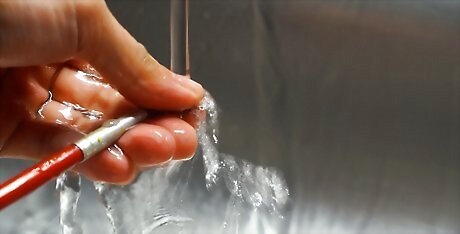
Pinch the bristles to dislodge leftover paint. After five to ten seconds of letting the water stream over the brush, use your fingers to gently pinch the bristles of the brush. At this point, the brush may appear clean, but it's still necessary to keep cleaning with soap. You may want to try using a brush comb at this point to help get all the paint off.
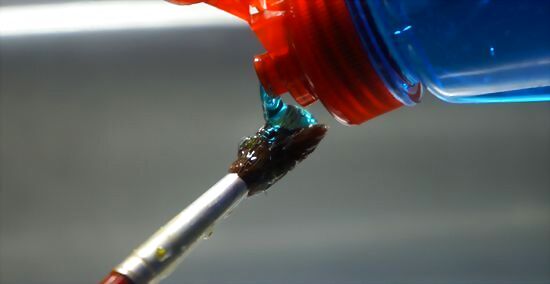
Place gentle soap on the brush and work it into the bristles. Turn off the water, then put about a teaspoon of gentle soap or artist's soap onto the bristles of the brush. Use your fingers to massage the soap into the bristles of the brush. You can also use shampoo in the place of soap. If you are washing a big brush, make sure that you are massaging the soap into the inner bristles as well as the outer bristles. It's important to work the soap into the place on the brush where the bristles meet the ring around the stem of the brush, which is called the ferrule. Neglecting to clean the area of bristles around the ferrule will eventually spread out the bristles, harden, and alter the shape of the brush.
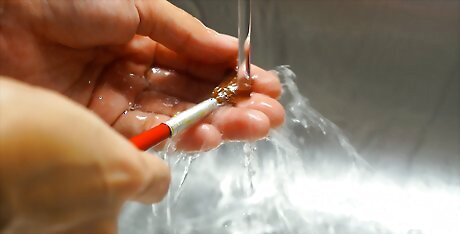
Rinse out the soap. Turn the water back on until it is lukewarm again. Then place the brush under the water. After the bubbly, soapy water stops streaming off the brush, use your fingers to massage the bristles and remove the last of the soap.

Swirl the brush in the soap. After rinsing out the soap, squirt a dime-sized amount of soap in the palm of your hand. Hold the brush in your other hand and swirl the bristles of the brush around in the soap. Swirling the paint brush in soap helps to target paint in the hard-to-reach area of the brush around the ferrule. The swirling motion mimics how you used your brush when painting, with the result that the soap reaches the areas of the brush where there might still be paint.
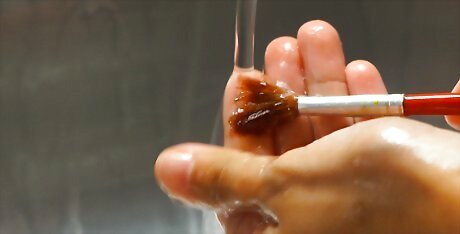
Rinse out the brush. After you swirl the brush around the soap in your palm, the brush should be completely clean. Hold it under lukewarm water, then massage the last of the soap out of the bristles.
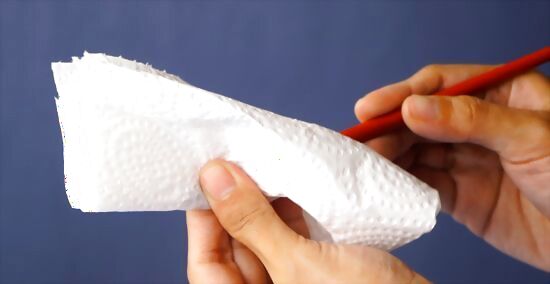
Dry the brush. It's not good for brushes to be wet for extended periods of time. After you finish rinsing out the soap, wrap the bristles of the brush in a paper towel or a clean rag, then gently squeeze to release water. Lay your brushes out to dry horizontally. Storing them vertically on their bristles can bend the bristles out of shape.
Maintaining Healthy Brush Habits While Painting
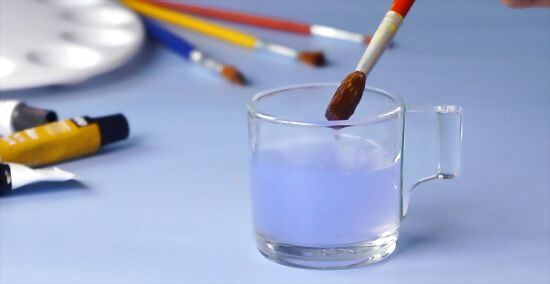
Dip brushes in water occasionally when using multiple brushes. There are several habits that you can get into during painting that make cleaning your brush easier and can protect the bristles from hardening or getting damaged. One of the most important things to remember is to not let paint dry on the bristles. If you are using multiple brushes when painting and are taking long breaks between each brush, remember to dip the brushes back into the paint occasionally to keep them from drying out. Dipping the brushes in water and swirling them around to remove excess paint ensures that the paint won't dry on the bristles.
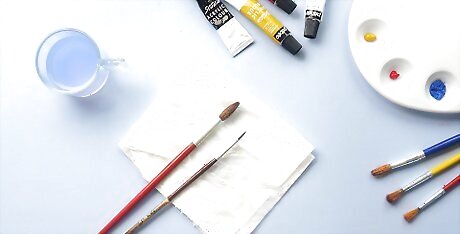
Don't soak your brushes while you are painting. If you are using multiple brushes, you may be tempted to just leave the brush in water. However, resting your brushes in the water can spread out the bristles and bend them out of shape. The best way to store your brushes while painting is to lay them horizontally on a rag or sheet of paper towel.
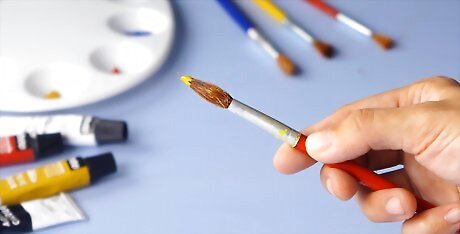
Avoid getting paint around the ferrule. When you are painting, you may be tempted to dip the bristles of the brush completely in the paint so that the entire head of the brush is submerged. However, doing this will get paint around the ferrule of the brush, making it extremely difficult to clean and eventually damaging and splaying its bristles. Instead of dipping the brush in the paint up to the ferrule, try to dip only up to ¾ of the brush's bristles in the paint.

















Comments
0 comment